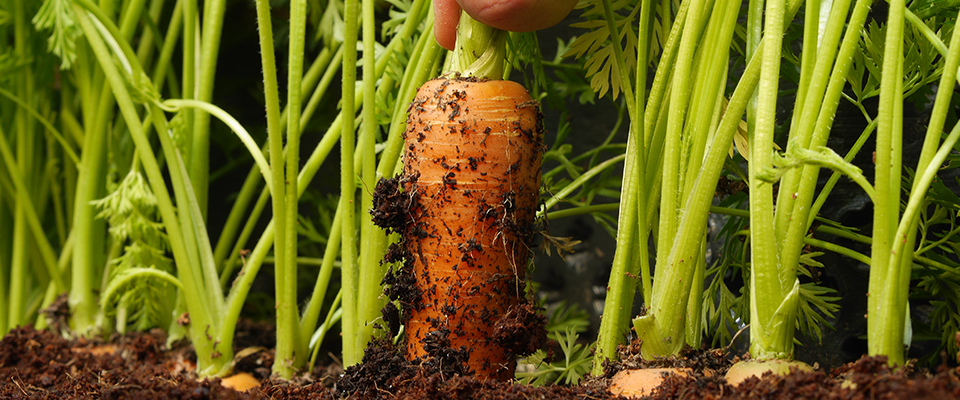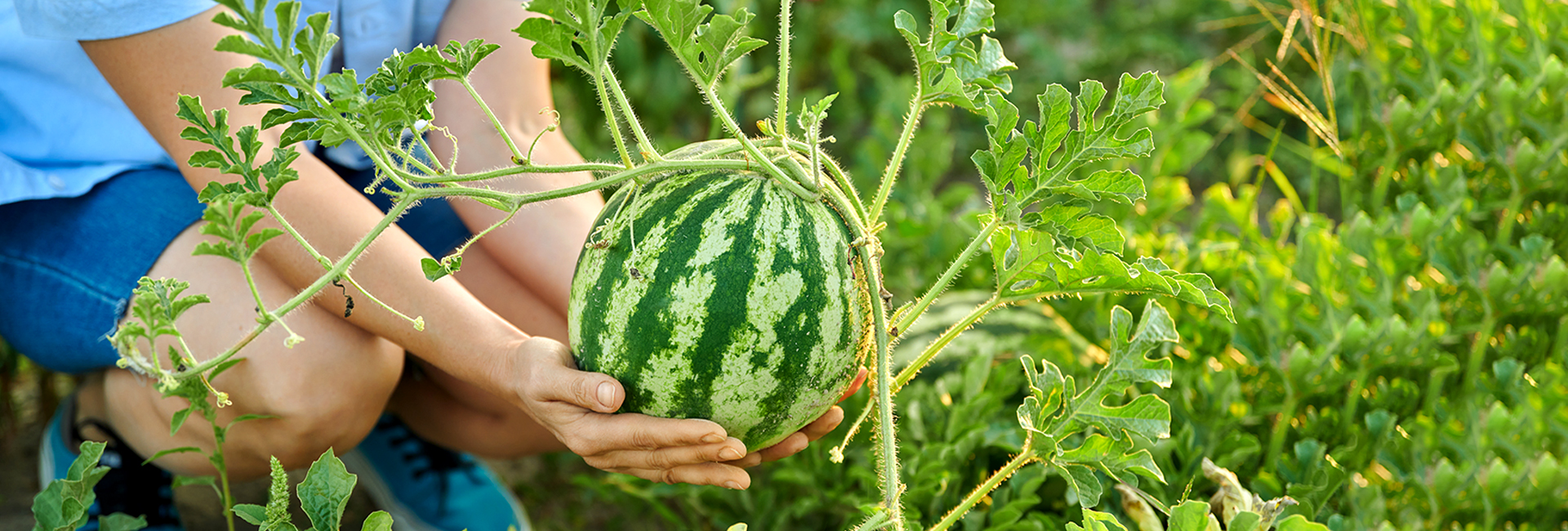Fall is a busy time in the garden. Not only are the best fall garden vegetables in season, but there’s also plenty of fall gardening chores to do.
Looking for some helpful tips for fall?
Check out our fall gardening guide. You’ll see the best fall vegetables to grow and a fall gardening checklist. Whether you’re a seasoned gardener or a novice, these prime fall garden plants and prep tips can help you make the most of this vibrant season.
Top Fall Vegetables to Grow in the Garden
1. Broccoli
Broccoli is a cherished fall garden favorite. With its lush, deep green florets, it stands out in the garden and on the plate. One of its remarkable qualities is its cold hardiness, thriving in cooler temperatures.
By planting broccoli in late summer, you ensure a flavorful harvest just in time for autumn dinners. Beyond its delicious taste, broccoli is a nutritional powerhouse, packed with vitamins, including vitamin C, and antioxidants that boost your immune system and overall health.
2. Carrots
Carrots are a delightful addition to your fall garden, offering a sweet and satisfying crunch when grown in the cooler months. Sow carrot seeds in late summer, and as the weather cools, they’ll develop their signature flavor and vibrant colors.
The versatility of carrots extends to their various shapes and colors, making them visually appealing as well. They are perfect for snacking, roasting, grating into salads, or adding to soups and stews.
3. Kale
Kale is a true cold-weather champion, thriving in cooler temperatures and becoming even more flavorful after a light frost. It’s available in different varieties, such as curly kale and lacinato kale (also known as dinosaur kale), each with its own unique texture and taste.
Besides adding variety to your fall dishes, kale is a nutritional powerhouse, rich in vitamins like A, C, and K, as well as minerals and antioxidants. Whether used in salads, sautes, or blended into nutritious smoothies, kale is a versatile green that enhances your autumn menu.
4. Spinach
Spinach is another versatile green that thrives during the fall season. It boasts a rich nutrient profile, making it a wise choice for your autumn garden. Whether you prefer it in salads for its fresh and crisp texture or as a key ingredient in sautés and smoothies, spinach adds a burst of nutrition to your meals. Its high content of vitamins, including folate and iron, makes it a valuable addition to your diet.
5. Lettuce
Lettuce varieties like romaine and butterhead flourish in the cool temperatures of fall. These greens bring freshness and crunch to your salads, making them a delightful accompaniment to your autumn meals.
With the arrival of cooler weather, lettuce is less prone to bolting (going to seed prematurely), ensuring a more extended harvest period. Growing your own lettuce allows you to enjoy the freshest and most flavorful salads right from your garden.
6. Radishes
For gardeners seeking a rapid fall harvest, radishes are the perfect choice. These quick growers can go from seed to plate within a few weeks. Radishes provide a peppery kick that adds a zesty flavor to salads, sandwiches, and other dishes. Plant radishes in late summer, and you’ll soon be savoring these vibrant root vegetables, adding a pop of color and taste to your autumn cuisine.
7. Beets
Beets thrive in the cooler temperatures of fall, making them an ideal addition to your autumn garden. They offer not only delicious roots but also highly nutritious greens. Beet roots come in various colors, from the classic deep red to golden and striped varieties.
Beets can be roasted, boiled, pickled, or grated raw into salads. Don’t forget to use the nutritious beet greens, which can be cooked like spinach or added to salads for an extra layer of flavor and nutrition.
8. Turnips
Turnips are a fantastic choice for your fall garden, offering both flavorful roots and edible greens. The mild flavor of turnip roots makes them versatile in the kitchen. You can roast, boil, mash, or add them to stews and soups.
Additionally, turnip greens are tender and nutritious, making them a valuable addition to your salads or sautes. With their versatility and ease of cultivation, turnips are a must-have for your autumn garden, providing a dual harvest of both roots and greens.

Fall Gardening Checklist
As fall arrives, many think the season is over. No more gardening… But that’s not always true. You can continue growing cold-hardy vegetables, flowers and perennials, and perform fall chores to prep for the winter season. Some of the best tasks to do in the garden in fall include:
- Plant Fall Vegetables:
Sow or transplant cool-season crops like kale, spinach, and radishes. You’ll typically want to plant these in late summer to early fall; however, some late-season crops can be sown 6 to 8 weeks before the first fall frost (like spinach). - Harvest Summer Crops:
Gather any remaining summer vegetables and herbs before the first frost. - Prepare Soil for Spring:
Add compost or organic fertilizers to enrich the soil for the next growing season. - Remove Spent Annuals:
Clear out any annual plants that have finished blooming. - Divide Perennials:
Divide and transplant perennial plants as needed. To divide perennials like daylillies, you’ll want to dig up the root ball, and split with a sharp hoe or shovel. This is another task you’ll want to do in late summer (probably around the first few weeks in September). - Mulch Garden Beds:
Apply a layer of mulch to control weeds and retain moisture. A light layer of shredded fall leaves is a cost-effective mulching option, or you can use straw or compost. - Take Cuttings for Propagation:
Collect cuttings for propagating plants in the spring. Some plants you’ll want to take cuttings of include boxwood, forsynthia, heather, holly and arborvitae. - Collect Seeds:
Save seeds from your favorite garden-grown vegetables and flowers for next year’s planting. One tip: Let the plant go to seed, and then you can dry upside down over a bucket to collect the falling seeds. - Deadhead Summer-Blooming Plants:
Prune spent blooms to encourage new growth and prolong flowering. This one gets often overlooked, but it’ll help you preserve a pop of color up until the first fall frost. - Tend to Herbs:
Harvest, dry, or freeze herbs for winter use. If you’re growing a perennial herbs, consider bringing them in for the winter. For example, rosemary plants do well when brought indoors over winter (especially in cold climates). - Transplant Potted Perennials:
Consider moving potted perennials to the ground, ensuring they are cold-hardy. - Weed Thoroughly:
Remove weeds to prevent resource competition and pest infestation. Do this, and then mulch your beds to reduce weed pressure in the spring. - Check on Perennials:
Inspect perennial plants for disease, damage, and insect infestation. If you spot pest or disease damage, consider treating them before the cold sets in. - Water Thoroughly:
Give your garden a deep watering after making changes. - Plan for Fall Annuals:
Replace early-blooming annuals with fall-blooming flowers like pansies and petunias. Petunias can be planted in fall to add a pop of color throughout the season. - Prepare for Fall Planting:
Make space for new fall crops by removing spent plants. Generally, you’ll want to start this task in late August or early September, depending on your location. - Adjust Garden Layout:
Organize your garden layout to accommodate seasonal changes. Think about sun requirements, for example. Did an area of your garden receive more shade than you’d planned and your tomatoes didn’t thrive? It might be time for a change in spring.
Follow this fall gardening checklist to ensure your garden thrives in the cooler months.
Wrapping Up
In conclusion, fall is a season of abundance and opportunity for gardeners. By choosing the right fall vegetables to grow and implementing essential winter preparation strategies, you can enjoy a thriving garden well into the colder months. Embrace the beauty and flavors of autumn, and let your garden provide a delicious and nutritious harvest that will keep you well fed throughout the fall and winter seasons.
At Homegrown Outlet, we’re your dedicated partner, ready to assist you at every stage of your journey toward creating a thriving fall and winter garden. Come visit one of our convenient locations today and kickstart your gardening adventure!




